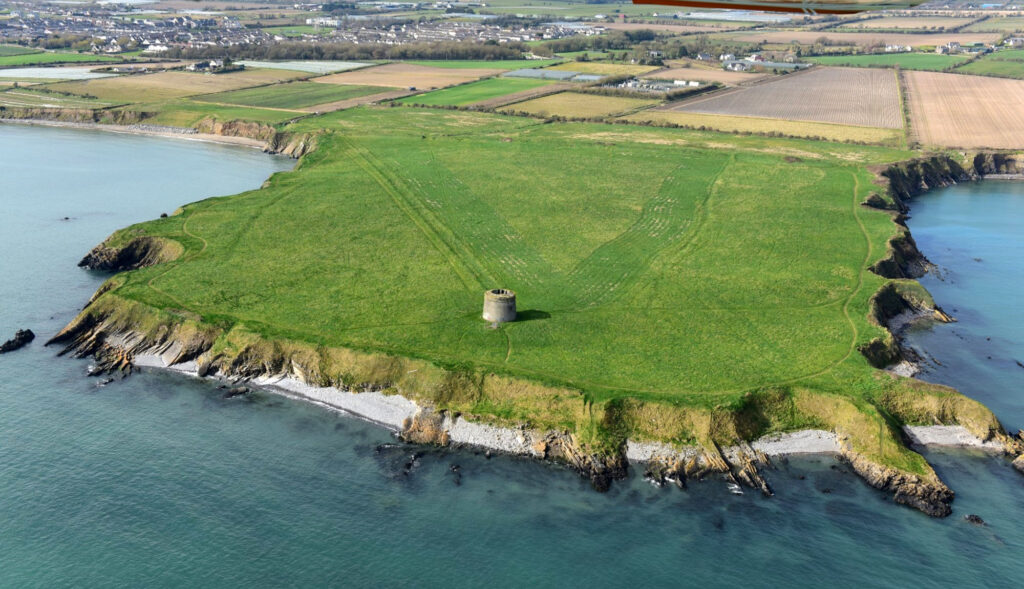Irish Americans will soon regale us with their ethnic pride, celebrating the saint that converted them to Christianity. They concede that St. Patrick was a Roman, but they wince at the suggestion that Paddy’s paesans also trampled on the Old Sod.
Since 1996, the Irish have been deflecting archeological evidence that our Italic ancestors not only Christianized them but set up housekeeping just a few miles from Dublin some two thousand years ago in a place called Drumanagh – even the name contains the root –ruman-. No less than the British Sunday Times broke the story of a Roman trading colony in 1996, citing artifacts like Roman coins, Italian pottery (from Arezzo), and jewelry. My colleague Rosario Iaconis wrote an excellent article for The Italic Way (XXVI) when this news first broke. Essentially, the Irish were not very pleased with the Brits informing the world that ancient Ireland was no better than Britannia in resisting Italianization.

The Drumanagh site still hasn’t been fully excavated. Some archeologists are working there but not too seriously – it’s become more like a workshop to teach amateurs the rudiments of digging. Irish Archaeology, an online publication, acknowledges the finding of Roman artifacts and even Roman burial sites in various Irish counties, but prefers to see these as trade goods or customs imported by Celtic folks. It would be a major turn-off to concede that Italic colonists, or worse, Roman military were attracted to the Isle. Even if Drumanagh was a Roman military fort, it doesn’t mean Rome conquered Ireland. But the mere suggestion that the ancient Irish tolerated such a foreign enclave for decades and mingled with Irish DNA would upset the narrative. But what of the “Black Irish?”
The Ancient Order of Hibernians posted this explanation of the origin of the “Black Irish”- that actor Tyrone Power “Latin look” that disrupts the classic red hair/blue eye Irish genes:
“How come there are so many dark-haired, dark-complexioned Irish? It’s relatively simple. The Spanish, Portuguese, and other countries in Europe, not to mention those from [north] African countries, traded heavily with Ireland and there were constant expeditions back and forth and ultimately intertwined families.”
How about an Italian connection? We know St. Patrick had Italic roots as did many Spanish, Portuguese, and north African sailors and merchants. The Roman Empire lasted as long as it did because Italy exported colonists to those places long before the Drumanagh colony. Roman emperors Hadrian and Trajan, whose coins have been found in Ireland, were born of Italian colonists in Spain.

Then there’s the matter of the Spanish Armada, some of whose ships were wrecked on the Irish coast in 1588. The Lavia was from Venice, the Juliana came from Sicily, and the Santa Maria de Vison from Naples. Institute researcher John DiGoia wrote an article in 1989 (The Italic Way, VI) on the Italian connection to the Armada. He additionally listed the wrecks of La Girona (Naples) and the Trinidad Valencera (Venice). The Armada contained 130 ships and 30,000 men of many Catholic nationalities. Most of the men were soldiers scheduled to hit English beaches under the command of Italian general Alexander Farnese, Duke of Parma.
The goal of the Armada to conquer the English was not lost on Irish freedom-fighters centuries later. One Irish revolutionary, John MacDermott, gave himself the nom de guerre Sean Mac DiArmada. The English executed him in 1916.
It seems absurd to deny or minimize the Italian connections to Ireland. Roman legions and colonists populated England for 400 years, only 180 miles from Ireland. Irish pirates crossed that channel to kidnap young Patrick. There was plenty of back and forth. The Irish “saved” civilization only because their elite spoke and wrote Latin – which happened even before Irish pagans became Christians.
One final note, the Summer 2010 edition of Cambrian Medieval Celtic Studies asserts that the word leprechaun is not a native Irish one and that it originated in Latin from “Lupercus” – a participant in a bizarre Roman festival called Lupercalia.
Happy St. Patricius Day! – JLM

Or, perhaps more appropriately, “Felix dies Sanctus Patricius“.